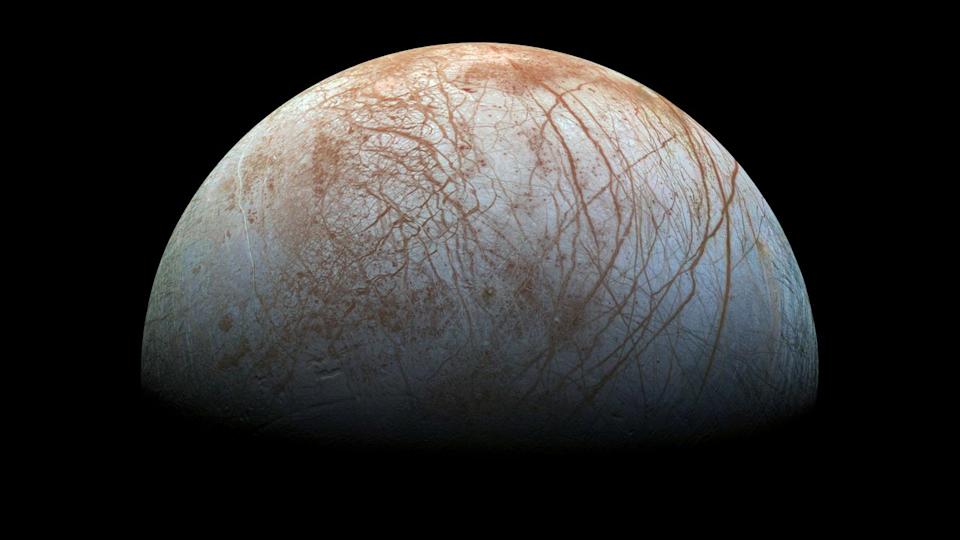
News
October 31, 2025
New laser drill could help scientists explore ice-covered worlds like Jupiter's ocean moon Europa
Scientists have developed a laser-based ice drill concept that could enable deeper, low-power exploration of ice on moons and planets in our solar system.
## New Laser Drill Could Unlock Secrets of Ice-Covered Worlds
Imagine peering beneath the thick icy shell of Jupiter's moon Europa, searching for signs of life in its hidden ocean. This tantalizing possibility is moving closer to reality thanks to a groundbreaking new laser drill concept developed by scientists. This innovative technology promises to revolutionize our ability to explore ice-covered worlds throughout our solar system, offering a deeper and more efficient method for probing their frozen depths.
Currently, exploring icy terrains presents significant challenges. Traditional mechanical drills require substantial power and can be prone to getting stuck or contaminated. The new laser-based drill offers a compelling alternative by melting its way through the ice using concentrated beams of light. This approach significantly reduces the power needed for operation, a crucial advantage when operating on distant celestial bodies where energy resources are limited.
The core principle behind the laser drill is simple yet elegant. High-powered lasers generate heat, which is then precisely directed to melt the ice. The resulting meltwater can then be channeled away, allowing the drill to steadily advance. One of the key benefits of this method is its potential to minimize contamination. Unlike mechanical drills that can introduce foreign materials into the ice, the laser drill primarily uses light, reducing the risk of altering the samples collected or compromising the integrity of the environment being explored.
The potential applications of this technology extend far beyond Europa. Saturn's moon Enceladus, with its plumes of water vapor erupting from its south pole, is another prime target. Mars, too, holds vast reserves of subsurface ice that could provide valuable clues about the planet's past climate and potential for harboring life.
While the laser drill concept is still in its early stages of development, its promise is undeniable. It offers a pathway to explore these icy frontiers with greater efficiency and precision. As scientists continue to refine and test this technology, we can anticipate a new era of discovery in the search for life beyond Earth. The secrets hidden beneath the ice of these distant worlds may soon be within our reach, thanks to the power of light.
Imagine peering beneath the thick icy shell of Jupiter's moon Europa, searching for signs of life in its hidden ocean. This tantalizing possibility is moving closer to reality thanks to a groundbreaking new laser drill concept developed by scientists. This innovative technology promises to revolutionize our ability to explore ice-covered worlds throughout our solar system, offering a deeper and more efficient method for probing their frozen depths.
Currently, exploring icy terrains presents significant challenges. Traditional mechanical drills require substantial power and can be prone to getting stuck or contaminated. The new laser-based drill offers a compelling alternative by melting its way through the ice using concentrated beams of light. This approach significantly reduces the power needed for operation, a crucial advantage when operating on distant celestial bodies where energy resources are limited.
The core principle behind the laser drill is simple yet elegant. High-powered lasers generate heat, which is then precisely directed to melt the ice. The resulting meltwater can then be channeled away, allowing the drill to steadily advance. One of the key benefits of this method is its potential to minimize contamination. Unlike mechanical drills that can introduce foreign materials into the ice, the laser drill primarily uses light, reducing the risk of altering the samples collected or compromising the integrity of the environment being explored.
The potential applications of this technology extend far beyond Europa. Saturn's moon Enceladus, with its plumes of water vapor erupting from its south pole, is another prime target. Mars, too, holds vast reserves of subsurface ice that could provide valuable clues about the planet's past climate and potential for harboring life.
While the laser drill concept is still in its early stages of development, its promise is undeniable. It offers a pathway to explore these icy frontiers with greater efficiency and precision. As scientists continue to refine and test this technology, we can anticipate a new era of discovery in the search for life beyond Earth. The secrets hidden beneath the ice of these distant worlds may soon be within our reach, thanks to the power of light.
Category:
Technology